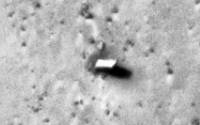I've just entered the XS1-L2 pin and signal names into a spreadsheet:
http://www.leonheller.com/XMOS/XS1-L2/X ... IGNALS.xls
Here is the updated schematic:
http://www.leonheller.com/XMOS/XS1-L2/XS1-L2.pdf
XS1-L2
-
leon_heller

- XCore Expert
- Posts: 546
- Joined: Thu Dec 10, 2009 10:41 pm
- Location: St. Leonards-on-Sea, E. Sussex, UK.
-
Corin
- Experienced Member
- Posts: 66
- Joined: Fri Dec 11, 2009 3:38 pm
The L2 can be escaped on a two layer board with design rules of 0.1mm/0.1mm (4/4) and the via's to 0.25mm finished size. With 2 layer boards, routing and decoupling of power supplies need particular attention. Note also EMC/EMI issues are more likely with a 2 layer board. Where possible, XMOS recommend a 4 layer board with separate power and ground planes.
The L2 is aimed at high volume markets and ideally requires professional assembly with a solder mask, stencil and IR reflow.
The pinout of the L2 was designed to allow easy wiring of the USB3318 and JTAG interfaces. Assuming all the components are on the same side of the PCB, the JTAG wires straight out to the 20-pin connector and two SMSC USB3318 PHYs can be wired to the L2 - one to each core at the North and South of the chip respectively.
I am currently putting the L2 footprint and associated files on the XMOS website - they should be up soon.
Please see the post on the XMOS discuss support forum for any further requests: http://www.xmos.com/discuss/viewtopic.php?f=62&t=783
Regards,
Corin
The L2 is aimed at high volume markets and ideally requires professional assembly with a solder mask, stencil and IR reflow.
The pinout of the L2 was designed to allow easy wiring of the USB3318 and JTAG interfaces. Assuming all the components are on the same side of the PCB, the JTAG wires straight out to the 20-pin connector and two SMSC USB3318 PHYs can be wired to the L2 - one to each core at the North and South of the chip respectively.
I am currently putting the L2 footprint and associated files on the XMOS website - they should be up soon.
Please see the post on the XMOS discuss support forum for any further requests: http://www.xmos.com/discuss/viewtopic.php?f=62&t=783
Regards,
Corin
-
leon_heller

- XCore Expert
- Posts: 546
- Joined: Thu Dec 10, 2009 10:41 pm
- Location: St. Leonards-on-Sea, E. Sussex, UK.
Thanks, Corin. I got the footprint pad sizes from the Gerbers, but it would be nice to have a proper drawing.
They are actually being shipped now. I received a couple yesterday.
They are actually being shipped now. I received a couple yesterday.
-
shawn

- XCore Addict
- Posts: 238
- Joined: Thu Dec 17, 2009 5:15 am
First time I see a QFN with double rows of pads? First time I had to look @ QFN's. I can see the technical advantages. The price for using QFN are good and bad for the developer that is you now have a chip designed for big markets, it will make some developers rich.The only draw back you need specialized equipment for DIY to market. So after checking out said equipment price of complete bench system, that I believe makes sense 5,000 to 7,000. Dress it with a min. of extra's, scopes, signal generators, etc what ever you think, plus a little creativity, your in business. That is a reachable goal for any developer in time. That would mean you can build or rework about all one could handle BGAs, QFNs etc, upto 50mm. Anther five grand one could purchase an air fountain and the sky is the limit. To bad the economy world wide is so volatile.That's all right though because markets tend to reward, good successful start ups that may lead toward a direction out of the red and into the black.
Hmmm? Thinking CS$ via CSP... 8-)
Hmmm? Thinking CS$ via CSP... 8-)
-
lilltroll

- XCore Expert
- Posts: 956
- Joined: Fri Dec 11, 2009 3:53 am
- Location: Sweden, Eskilstuna
Better this way compared to the other-way around!
CPU-modules can be built in so many ways:
Everything from the DIMM-PC

to plug-in modules

If just someone started to make modules with the minimum amount of extra components , and with all active pin available - and open hardware - then you could use the modules for prototype series up to 20 boards. For any higher volumes - you use robots and ovens anyway today. At least for production within Europe.
CPU-modules can be built in so many ways:
Everything from the DIMM-PC

to plug-in modules

If just someone started to make modules with the minimum amount of extra components , and with all active pin available - and open hardware - then you could use the modules for prototype series up to 20 boards. For any higher volumes - you use robots and ovens anyway today. At least for production within Europe.
Probably not the most confused programmer anymore on the XCORE forum.
-
lilltroll

- XCore Expert
- Posts: 956
- Joined: Fri Dec 11, 2009 3:53 am
- Location: Sweden, Eskilstuna
I haven't given up the attempt of a 2 layer PCB version with USB 2.0
You do not have the required permissions to view the files attached to this post.
Probably not the most confused programmer anymore on the XCORE forum.
-
paul

- XCore Addict
- Posts: 169
- Joined: Fri Jan 08, 2010 12:13 am
That's a nice rendering - what software are you using to do that?
Paul
On two occasions I have been asked, 'Pray, Mr. Babbage, if you put into the machine wrong figures, will the right answers come out?' I am not able rightly to apprehend the kind of confusion of ideas that could provoke such a question.
On two occasions I have been asked, 'Pray, Mr. Babbage, if you put into the machine wrong figures, will the right answers come out?' I am not able rightly to apprehend the kind of confusion of ideas that could provoke such a question.
-
lilltroll

- XCore Expert
- Posts: 956
- Joined: Fri Dec 11, 2009 3:53 am
- Location: Sweden, Eskilstuna
It's called POV-Ray.paul wrote:That's a nice rendering - what software are you using to do that?
http://www.povray.org/
Some time ago someone wrote a free plugin to Eagle ECAD that generates a file that POV-Ray can read. Other people have also written more help programs that can be found.
http://www.matwei.de/doku.php?id=en:eagle3d:eagle3d

If you are using Eagle - it's a nice help.
Probably not the most confused programmer anymore on the XCORE forum.
-
lilltroll

- XCore Expert
- Posts: 956
- Joined: Fri Dec 11, 2009 3:53 am
- Location: Sweden, Eskilstuna
Can this work IRL for the L2 ??
Noo Error in rank :evil: (Shortcut between GND & 1.0 V rail)
Noo Error in rank :evil: (Shortcut between GND & 1.0 V rail)
You do not have the required permissions to view the files attached to this post.
Probably not the most confused programmer anymore on the XCORE forum.
-
lilltroll

- XCore Expert
- Posts: 956
- Joined: Fri Dec 11, 2009 3:53 am
- Location: Sweden, Eskilstuna
I have not played myself with pasta-stencils - but I guess that would be a good thing for fitting an L2 to a PCB together with heat. Is it possible to make a tiny stencil with 2 guidance holes that could be used for prototyping? Most other components can be soldered by hand with iron or hotair.
Probably not the most confused programmer anymore on the XCORE forum.
